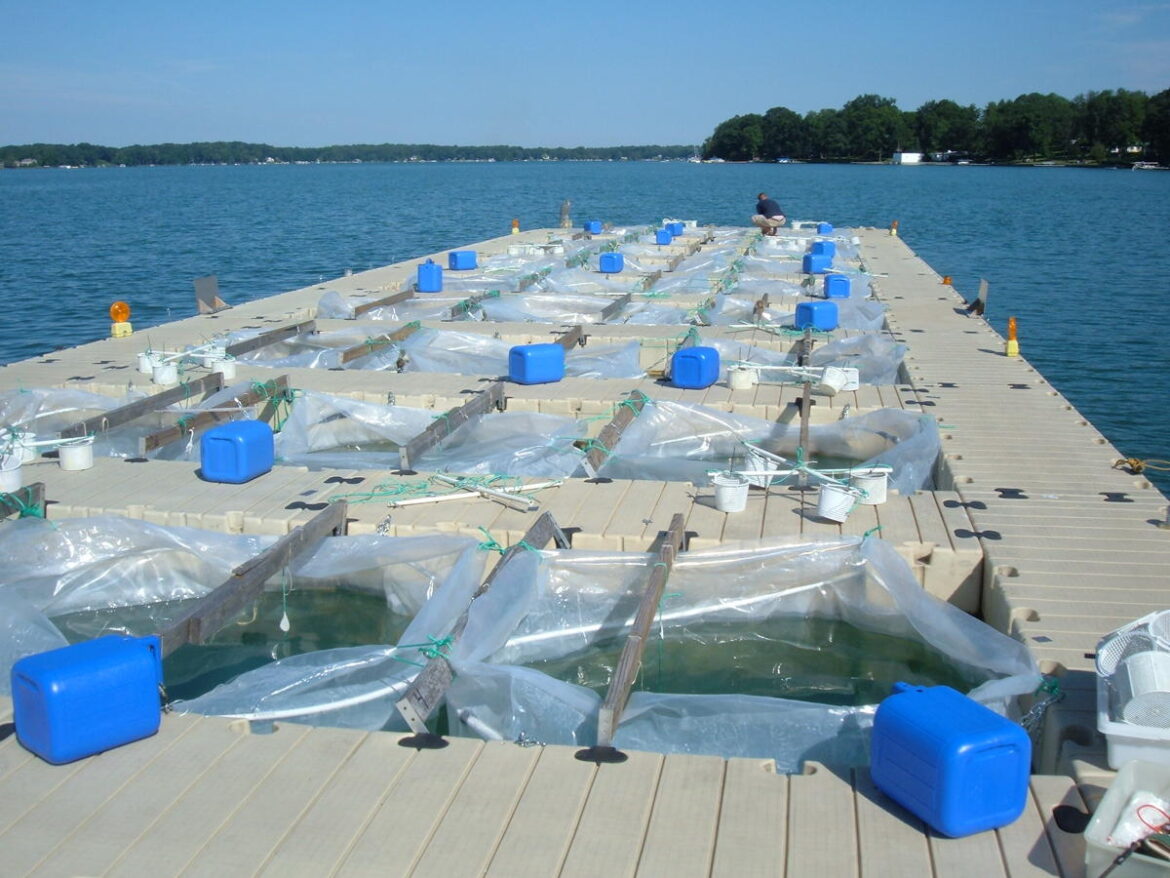
Researchers did a variety of tests to prove the relationship between zebra mussels and Microcystis. Image: Orlando Sarnelle
By McKoy Scribner
Scientists from the W.K. Kellogg Biological Station first noticed an invasive population of zebra mussels in Gull Lake in the mid-1990s. Afterwards, unexpected harmful algal blooms started appearing.
That led to a long-term research project to see if there was a connection.
Stephen Hamilton, a professor at Michigan State University’s research station south of Hickory Corners, in Southwest Michigan says the presence of zebra mussels led to an increase in a type of bacteria called Microcystis that produces the algae.
Zebra mussels fingernail-sized mollusks native to fresh waters in Eurasia. Scientists say they likely arrived in the Great Lakes in the 1980s in ballast water discharged by large ships coming from Europe, according to the U.S. Geological Survey.
“The strongest effect is probably a kind of differential feeding where they graze down all the other kinds of algae. And then Microcystis is not palatable and prospers because it’s not competing with these other algae,” Hamilton said.
In other words, while the mussels feed on all other algae, it leaves Microcystis to prosper in a situation where otherwise it wouldn’t be very competitive.
Hamilton says the researchers also noticed the two species’ connection when a large number of mussels died off due to warm temperatures in 2010.
Warm water usually means more Microcystis.
Instead, researchers saw an 80% decrease of the bacteria, “which enabled us to have yet another line of evidence showing the relationship between zebra mussels and Microcystis,” he said. “Because that year when they died back, the Microcystis dropped, and then it came back when the zebra mussels came back.”
Hamilton’s team has been studying the interactions between zebra mussels and Microcystis for more than a decade.
McKoy’s story is brought to you as part of a partnership between WKAR and Michigan State University’s Knight Center for Environmental Journalism.